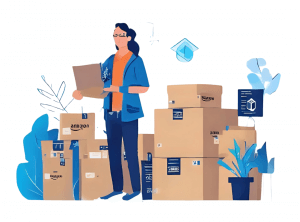Note: This is another installment in my ongoing Amazon Fundamentals series. -JD
Order Defect Rate (ODR)To put it simply, the Order Defect Rate ... More is one of the most important metrics for Amazon sellers. By looking at this single value, Amazon has a good idea of how you’re performing as a seller. But where does this number come from and why should you care about it?
An order is considered defective when a buyer:
- Leaves negative feedbackA performance rating on a scale of 1 to ... More
- Files an A-to-z claim
- Initiates a credit card chargeback
Note that an order can’t have more than one defect. For example, if a buyer leaves negative feedback and files an A-to-z claim on the same order, it only counts as one “defect.”
ODR is calculated by adding up the number of defective orders and dividing by the total number of orders in a given time period. Amazon requires sellers to maintain an ODR of under 1%. Since many order defects aren’t filed right away, Amazon usually only calculates ODR for periods of time that aren’t within the last month or so.
First and foremost, you should care about your ODR because it’s a good representation of the quality of the service you’re providing to your customers. If your ODR is consistently near 1%, or even goes above it, you should examine your business practices to see if there’s a way that you can improve customer satisfaction.
Sellers who have an ODR approaching 1% are very likely to have their accounts suspended or put on probation. Long-term ODR rates of 1% or greater are very likely to result in closed accounts.
If you notice your ODR creeping upwards, you should develop a plan to get it under control.
Problem: Are you taking too long to ship? Are you cancelling orders before you ship (you can see this by viewing your pre-shipment cancellation rate)?
Solution: List only items that you have in stock and ready to ship. Buyers expect items to be shipped quickly!
Problem: Is your merchandise different from what you’re describing?
Solution: Be accurate in your listings. Use conditions appropriately and accurately.
Problem: Are items getting damaged during shipment?
Solution: Pack your items more securely, using quality packaging materials. Trying to cut corners can cost you big time!
By identifying your problems and having a plan in place, you’ll be prepared to present your case to Amazon if you are placed under review or suspended. In the case that your account is suspended, review our guidelines for writing to Amazon Seller Support.






6 Responses
What counts short term or long term ?
Hello, Michelle, thank you for your question. If your short term ODR goes above the allowed ceiling, you’ll be notified about it no matter what your long-term metric shows. Similarly, if you communicate with the performance team and promise to fix your ODR, for instance, and your short-term ODR has already begun dropping, but your long term one is still high, as it hasn’t yet updated, they won’t take any action against you because the long-term one is still too high. So I’d say focus on your short-term ODR more, as it will naturally influence the long-term one too.
Cheers!
Maria
SellerEngine Team